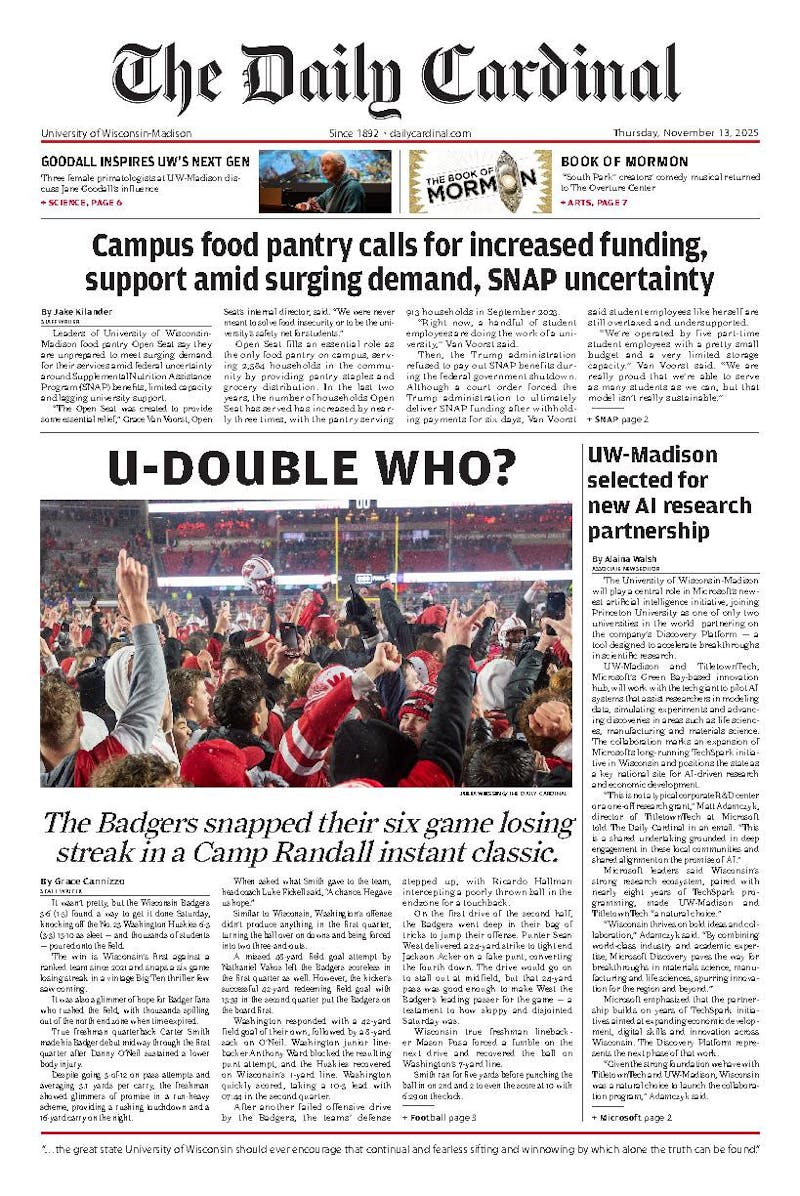SCIENCE
Two independent teams of physicists working at the Large Hadron Collider (LHC) near Geneva, Switzerland made a surprising announcement early on the morning of July 4. The announcement: They had discovered a new particle, and it might help explain why things have mass.
Researchers have been searching for this particle, known as the Higgs boson, since it was first proposed almost 50 years ago. The Higgs boson is incredibly difficult to make, however, requiring the collision of protons at very high energies. Designing, building and running the experiments to find it took years of work from scientists around the world.
The University of Wisconsin-Madison played an important role as two Wisconsin scientists have been right on the front lines. Professors Sau Lan Wu and Wesley Smith, both in the UW-Madison physics department, played critical roles in designing the experiments and analyzing the data that led to the July 4 announcement.
“Wisconsin is sort of a rare place in that we have two strong groups, one on ATLAS, and one on CMS,” said Smith, referring to the two main detectors at the LHC. “We have the resources here to build large parts of experiments and really make an impact.”
Physicists have long known that objects have mass and that massive objects attract each other. But what they could not explain was why things have any mass to begin with.
One potential answer lay in the Higgs mechanism, first proposed in the 1960s. The Higgs mechanism says that an invisible field, called the Higgs field, permeates the universe, and that interacting with this field is what gives particles their mass.
“The best way to envision it is if you picture a marble being dragged through molasses,” said Smith. “The stickier the particles found in the Higgs field, the more mass they have.”
Even though the Higgs field is everywhere, we cannot see it directly. Physicists must force the field to show itself by creating an associated particle called the Higgs boson in order to prove that the Higgs field exists and that the Higgs mechanism is correct.
By sending beams of protons whizzing around at nearly the speed of light and colliding them with each other, physicists can create just the right conditions to make a Higgs boson. Once a Higgs boson appears, it rapidly decays into other particles which leave distinct signatures on the LHC’s detectors.
“Reassembling the debris to find the Higgs particle is literally like finding a needle in a haystack,” said Wu.
This is where Smith and Wu’s research teams come in. Wu’s group works on the ATLAS detector, where they simulate the expected results of collisions and analyze much of the data coming out of the experiments. Smith’s group works on the CMS detector, where they are responsible for the design and operation of the “trigger” system that sifts through billions of collisions per second and decides which data is interesting enough to be stored for further analysis.
Significant parts of the CMS detector were also designed and built in Wisconsin. Computer science Professor Miron Livny developed important parts of the software used to analyze data from the collisions.
Scientists working on the Higgs research have been careful to say only that the new particle might be the Higgs boson. More experiments are necessary to prove whether it actually is or not.
For example, according to Smith, the theory predicts that the experiments should produce a certain amount of the Higgs boson.
“If we’re making too many or too few,” Smith said. “That means something’s wrong.”
The theory also predicts that the Higgs boson can decay into different combinations of particles at different rates.
“An important step in ascertaining whether it is the Higgs particle is to measure decay rates,” Wu said.
Preparations for these experiments are already in progress. The LHC will shut down next year in order to prepare for experiments at even higher energies, and Smith’s group is currently working to upgrade the trigger systems at CMS to handle the collider’s new capabilities.
If the upcoming experiments prove that the new particle is indeed the Higgs boson, physicists will begin studying the Higgs mechanism in detail. This might in turn provide insight into exotic physics like extra dimensions, shadow universes and dark matter.
With all this in mind, Smith sees the recent discovery not as the end of the story, but as an exciting beginning.
“If we found it,” Smith said, “my gosh. Now we have an incredible opportunity to study it!”






